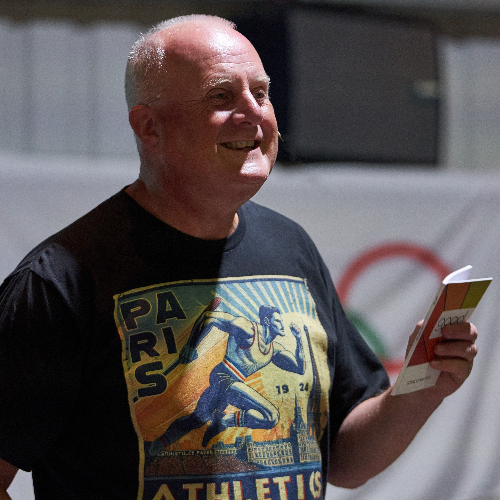-
The 4 Points: #1: God Loves Me: Bible Story: The Last Supper. - Series
Contributed by Gordon Curley on Mar 11, 2024 (message contributor)
Summary: Easter Series - THE 4 POINTS: #1: God Loves Me: Bible Story: The Last Supper. - sermon by Gordon Curley (PowerPoint slides to accompany this talk are available on request – email: gcurley@gcurley.info)
SERMON OUTLINE:
Surprise #1: Limited Information.
Surprise #2: No Lamb.
Surprise #3: A New Meaning
SERMON BODY:
Now you will not find the four points graphics hanging up in any museum,
• No art expert would ever consider them a great work of art,
• But somebody in advertising would value them,
• Because their simplicity communicates some deep and great truths.
• Over the next four weeks we are using these four points as a springboard,
• For our teaching as we countdown to Easter.
• The first symbol in this series of four, is the ‘The Heart’ which stands for love.
• And in our Bible passage today,
• We have what has been called, ‘A love feast.’ or ‘agape feast,’
• (Agape = unconditional = all were welcomed and accepted!)
• This was a fellowship meal (& communion) eaten by Christians in the early church.
• (Acts 2:46–47; 1 Corinthians 11:17–34 & Jude 1:12).
• Tertullian (Christian leader in the second century AD),
• Hippolytus of Rome (Christian leader in the third century AD),
• Both wrote about communal meals, “love feasts.”
• Out of these meals together, the Church would also have a time of communion.
• Clearest example of that is found in First Corinthians chapter 11.
This morning, we are going to look at how Jesus instituted this type of meal,
• What Christians call, Communion, Breaking of Bread, The Lord’s Supper,
• The Lords table, Sacrament or Eucharist,
• A variety of names, each containing its own nugget of truth.
• i.e. Breaking of Bread (Acts chapter 2 verse 42)
• This describes the act of "taking bread and breaking it".
• i.e. Communion (1 Corinthians 10 verse 16).
• Greek word translated ‘Communion’ or ‘Participation’ is "Koinoia”.
• Meaning "fellowship” or “Sharing together"
• i.e. The Lords Table (1 Corinthians chapter 10 verse 21)
• This title is actually used in both the Old & New Testament.
• The expression "Table" was symbolic of God's provision:
• i.e. The Lord’s Supper (1 Corinthians 11 verse 20&26).
• In contrast to the ‘Lord's table’ which is a spiritual one that cannot be seen, it's symbolic,
• The ‘Lord's Supper’ can be visibly seen, you can smell it, touch it & taste it!
• It is a literal loaf of bread & a literal cup of wine.
• The emphasis in these verses is proclamation, declaring, speaking out.
• "You proclaim the Lord's death, until he comes".
• i.e. Sacrament - which comes from the Latin word "Sacramentum".
• This is not a biblical word, a word found in the Bible,
• Something sacred.
• This word, sacrament is a good reminder that our priority is first to the Lord,
• i.e. Eucharist (Greek 'thanksgiving'),
• It is a word we rarely ever use because of its association to other denominations.
• But the word itself is a good one!
Now as I looked at this topic this week,
• I was taken up with a number of surprises.
• And I thought I would share those things that surprised me in my studies.
Ill:
Famous paintings Trivia
(a).
• ‘The Mona Lisa’ (Leonardo da Vinci, c.1503-1506)
• In 1911 the Mona Lisa was stolen from the Louvre in Paris.
• Amazingly, in the year after the theft more people went to gaze upon the empty space,
• Then, had visited the work of art in the year leading up to its disappearance.
(b).
• Vincent van Gogh’s ‘The Starry Night’ (1889)
• The Starry Night depicts Van Gogh’s view from an asylum. He left out the iron bars.
• The value is reportedly about $900 million.
• Sadly, Van Gogh was unable to sell it!
(c).
• Most of us are familiar with Edvard Munch’s painting ‘The Scream’ (1893).
• But what you might not know is there are five versions of ‘The Scream.’
• The most famous is the 1893 version in the National Gallery in Oslo.
• Joke photo/cartoon,
• The reason why he screamed was he stood on a piece of Lego.
• TRANSITION:
• One of the biblical scenes that artists have tried to portray more than any other,
• Is the Last Supper scene.
• The most famous being Leonardo Da Vinci's painting ‘The Last Supper’.
• In 1980, a 19-year restoration effort of the artwork began.
• But sadly, very few of Leonardo da Vinci’s original brushstrokes remain.
• Leonardo Da Vinci may have been a great painter,
• But his was a poor theologian – let me explain!
• e.g. Meals in Jesus’ day were eaten from a platform that stood 18 inches above the floor.
• Not a very long table.
• e.g. The men would have laid on the ground,
• Their weight supported by their left arm while they ate with their right hand.

 Sermon Central
Sermon Central



